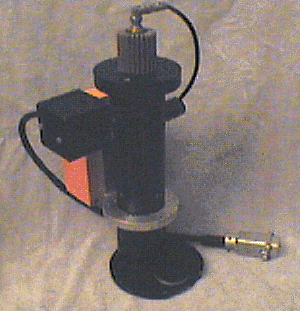California Center for Astronomy and Astrophysics
My Early Photometers
By Philip E. Evans
![]()
While a staff member at the Multiple Mirror Telescope Observatory (MMTO) on Mt. Hopkins in southern Arizona, I became interested in the area of photometric observations. This area was wide open to both the professional and the amateur with smaller telescopes at their disposal. In the areas of reasonably bright, very short period variables and the brighter close eclipsing binaries, meaningful observations could be made by those with smaller scopes and of lesser means.
Over the period of several years, I built and employeed several different designs of photoelectric photometers. At first, I stuck with the tried-and-true photomultiplier tube (PMT), but I quickly became intrigued with the possibilities of solid-state detectors. Following is a brief description of both a tube and a solid state design that I built.
My First Photometer
Unfortunately, I have no photographs of my first photometer and it has long since been dismantled. It was, however, of very conventional design utilizing a 1P21 photomultiplier tube (PMT) from RCA and a standard set of UBV glass filters. Construction of almost the entire unit was done utilizing copper pipe and fittings (called 'Plumbers Delight"). Only in the areas of the pinhole slides, filter slides, and the slide guide mechanisms, was aluminum utilized. In the areas where the aluminum needed to be bonded to the copper, a high quality 2-part commercial-grade epoxy was used. The two slide guides and the slides passed completely through the pipe just forward of the PMT head. These slides could be manually pushed or pulled from either side.
The original design utilized only air cooling for the PMT. However, it quickly became apparent that something much better was needed. Leaving the majority of the unit intact, I redesigned the PMT head. The new PMT head unit was machined entirely out of aluminum. It employed a chilled-water and glycol coolant system, where the coolant was pumped through the PMT head in a jacket surrounding the PMT itself. This unit worked fine using the standard UBV filters and was utilized on numerous variables and close binaries down to about 12th magnitude.
My Second Photometer
The second photometer that I built, was of a totaly different design and with different goals in mind. I decided to build a solid state photometer that would be sensitive in the red and near infrared regions of the spectrum. The photo shows the results, and this unit I still have today, though it hasn't been used in a number of years.

The detector chosen was a large
area photodiode from Texas Instruments. This detector has a circuler
detection area that is 11mm in diameter. Though it may be used across
almost all of the visible spectrum, it is by far the most sensitive in
the red and the near-infrared. I again opted to utilize air cooling,
and this can be seen in the gold anodized unit at the top of the
photo. The large orange box, on the left side of the unit,
contains amplifier electronics for the signal from the photodiode.
At the forward end of the unit (bottom of the photo) is a filter wheel that will accept 3 standard round filters (Series VI) and a forth filter position, that may be used 'open' for alignment and adjustment purposes, or closed, with a solid insert, for taking dark-level exposures.
Behind the filter wheel are several prism-type beam splitters. One beam splitter diverts a small portion of the light, passing it to an eypiece which is equiped with a very fine grid reticule for focusing the unit.
A second
beam splitter, diverts a small portion of the light to the
square, black box-like assembly on the left side of the unit, which is
part of an autoguiding system. It contains both a 9mm quadrant
detector of photo-diodes and the associated electronics that allows it
to be utilized for autoguiding. When an object is being observed,
the object is centered on the quadrant detector, and the unit will
attempt to to keep the object perfectly centered by sending correction
commands to the mount control computer. This unit proved very
succesful on brighter objects, requiring only occasional, manual
corrections of the mount.
Future Designs?
Probably,
the main item that I would change, is the beam-splitters. With
the two beam-splitters in the path, too much light is being diverted
for guiding and focusing. After working extensively with the
high-speed photometer designs utilized by Dr. John McGraw and his
observing team, I probably would choose to utilize either a dichroic
filter reflecting a portion of the available light to a CCD guide
camera, or a flat mirror with a small slit. The mirror reflects
light to a CCD guide camera while the slit passes only the light from
the object of interest to the detector. Also, with the abundance
of Peltier effect cooling devices to choose from today, I would
probably go this route for my cooling requirements.
![]()
